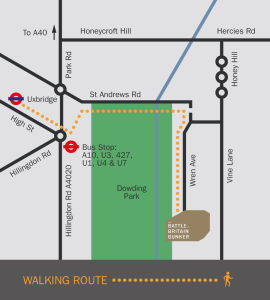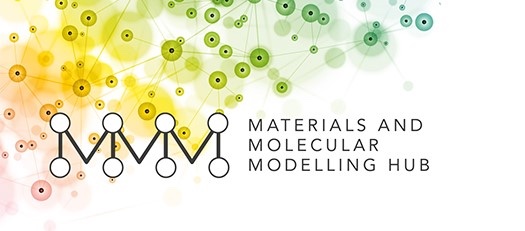
MMM Hub Conference & User Meeting 2024
29 October 2024 @ 1:30 am – 31 October 2024 @ 1:30 pm
Venue: Battle of Britain Bunker, Wren Ave, Uxbridge UB10 0GG
The Materials and Molecular Modelling (MMM) Hub is holding a conference and user meeting between 29-31 October 2024, to bring together the national community of modellers in materials and theoretical chemistry to present the latest research in the field, and provide the opportunity to network and discuss with like-minded researchers. The meeting is taking place at the Battle of Britain Bunker, Wren Ave, Uxbridge UB10 0GG, close to Brunel University London.
The conference will highlight the high-calibre scientific throughput produced across the MMM Hub’s partner community and beyond, highlighting particularly the contribution of modern HPC resources (including MMM Hub’s ‘Young’), in enabling these advances. A selection of breakthrough materials and molecular modelling research taking place across the country will be presented, addressing challenges to society and industry through simulation at the atomic scale, alongside discussion in emerging computing trends and how this impacts materials scientists.
Topics will include, but not be limited to, molecular modelling, biological and technological soft matter, functional materials and devices, structural materials, surfaces and interfaces and methods and method development. The meeting will provide an excellent opportunity for researchers at all levels to learn about the forefront of this important field in numerical simulation, and to showcase their most recent results.
The meeting will see a number of invited and contributed talks, plus a selection of 2-minute flash talks from across the community. We also invite participants, particularly graduate student users of the Hub, to contribute A1-size, portrait orientation posters of their research. The posters will be on display to participants throughout the day, and at a drinks reception and Poster Presentation.
Confirmed invited speakers:
Keith Butler – University College London
Gábor Csányi – University of Cambridge
Carole Morrison – University of Edinburgh
Juliana Morbec – Keele University
08/04/2024 – 18/08/2024 – Early Bird registration £100, including a conference dinner on Wednesday 30 October.
18/08/2024 – 15/09/2024 – Standard registration £150, including a conference dinner on Wednesday 30 October.
We may be able to provide some financial assistance towards early career delegate participation. Please send an email to the organising committee at tyc-administrator@ucl.ac.uk justifying your reason for applying for support to attend the meeting.
Early Bird registration deadline: Sunday 18th August 2024
Registration deadline: Sunday 15th September 2024
Abstract submission deadline: Sunday 1st September 2024
We are generously supported by ASME and Hewlett Packard Enterprise
Getting to the Battle of Britain Bunker
- BY TUBE:Nearest station Uxbridge (Metropolitan and Piccadilly), then one mile walk through Dowding Parkvia the High Street and St Andrews Road, signposted by blue and brown tourist signs. There is a cab rank at Uxbridge.BY BUS: To St. Andrew’s Church on the A10 or U3 from Heathrow or the 427, U1, U4 or U7 then walk through Dowding Park. Bus U2 stops at the junction of Hercies Road and Honey Hill. Check routes at www.tfl.gov.uk/plan-a-journey
- BY CAR: Use satnav postcode UB10 0GG or search maps for Battle of Britain Bunker

ACCESS
There are accessible parking spaces available near the main entrance, a lift inside the building and a ramp up to the building.
Suggested hotel: Premier Inn, Colham House, Bakers Road, Uxbridge, UB8 1QJ
MMM-Hub-conference-2024-privacy-notice
Code of conduct:
We value the participation of every member of the materials and molecular modelling community and want to ensure that everyone has an enjoyable and fulfilling experience, both professionally and personally. Accordingly, all participants of the MMM Hub Conference and User meeting are expected to always show respect and courtesy to others. The MMM Hub and its partners strive to maintain inclusivity in all of our activities. All participants (staff and students) are entitled to a harassment-free experience, regardless of gender identity and expression, sexual orientation, disability, physical appearance, body size, race, age, and/or religion. Harassment in any form is not acceptable for any of us. We respectfully ask all attendees of the MMM Hub Conference and User meeting to kindly conform to the following Code of Conduct:
- Treat all individuals with courtesy and respect.
- Be kind to others and do not insult or put down other members.
- Behave professionally. Remember that harassment and sexist, racist, or exclusionary jokes are not appropriate.
- Harassment includes, but is not limited to, offensive verbal comments related to gender, sexual orientation, disability, physical appearance, body size, race, religion, sexual images in public spaces, deliberate intimidation, stalking, following, harassing photography or recording, sustained disruption of discussions, and unwelcome sexual attention.
- Participants asked to stop any harassing behaviour are expected to comply immediately.
- Contribute to communications with a constructive, positive approach.
- Be mindful of talking over others during presentations and discussion and be willing to hear out the ideas of others.
- All communication should be appropriate for a professional audience, and be considerate of people from different cultural backgrounds. Sexual language and imagery are not appropriate at any time.
- Challenge behaviour, action and words that do not support the promotion of equality and diversity.
- Arrive at the conference events punctually where possible.
- Show consideration for the welfare of your friends and peers and, if appropriate, provide advice on seeking help.
- Seek help for yourself when you need it.
MMM Hub Conference 2024 Organising Committee
George Booth, King’s College London
Alejandro Santana Bonilla, King’s College London
Ricardo Grau-Crespo, University of Reading
Ed Smith, Brunel University London
Karen Stoneham, University College London
David Wilkins, Queen’s University Belfast
Jun Xia, Brunel University London

